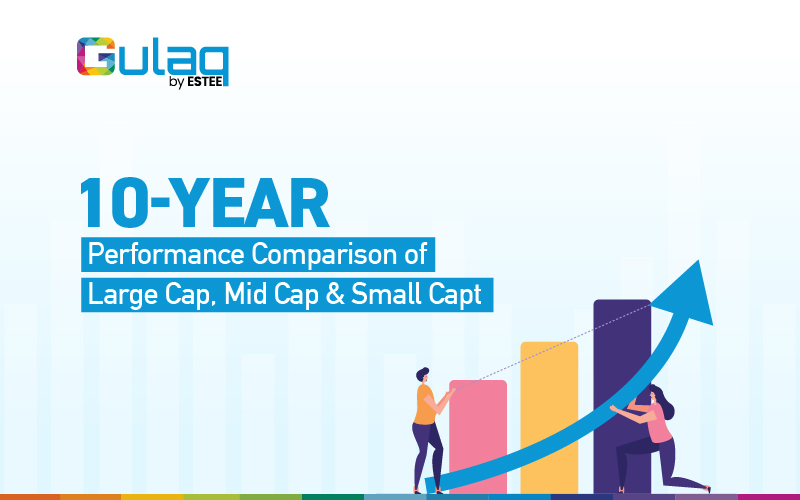
Myths and Reality of Quant investing
Would you let a machine or an algo choose the investment portfolio for you?
The past 1 – 2 years saw the launch of many quant funds and those who invested in the funds are repeating the benefits. The stellar performance of these systematic investment funds has invited the investor community to put their trust in quant funds, now available on platforms like smallcase.
Quant investing funds have a systematic approach to stock selection contrary to the traditional stock-picking or discretionary methods. For the same reason, it is also known as systematic funds. Quant’s reliance on technology and reduced humane intervention have created much noise in the market.
How different are these two stock picking approaches from each other? Is one better than the other? Do quant funds ignore the fundamentals of the companies they are investing in? The debate goes on with certain aspects that remain a myth.
Let’s debunk some of these myths.
Myth: Quant funds use black box strategies and are hard to comprehend.
Reality: Investment inputs and processes in quant guarantees transparency even though they are automated.
The decision to buy and sell is done in a disciplined manner without any human bias. We have a unique tracking mechanism to comprehend the stock performance in detail. As quant specialists, we track if the portfolio performance is deviating from the expected performance alongside the driver of returns of each stock in our portfolio.
Myth: Quant investing rely only on technical and ignores the fundamentals
Reality: While it is true that most of the quant funds rely solely on technical analysis, we at Gulaq have multi-factor models which are a combination of technical, fundamental and macro-economic factors.
There are also a few quant strategies that rely heavily on rule-based approaches too. In both cases, the portfolio construction depends on the investor’s goal – long-term or short-term. Naturally, when multiple aspects of both fundamental and technicals are taken into consideration, the portfolios are likely to be more consistent in performance.
We use over 20 macro fundamentals that provide insights about the regime we are in. Be it domestic as well as international markets. Cash flows, quarterly results and their trend, PE, P/B, liquidity ratios, etc. are some of the fundamentals we use along with technical factors. The objective is to produce the best risk-adjusted returns.
Myth: Quant funds are backward-looking. They rely heavily on backtesting.
Reality: Both quant and discretionary portfolios bank on the same historical data for portfolio creation. This data, to an extent, is an indicator for an investor to gain a perspective into the possible risks and performance. But well-designed quant strategies avoid overfitting. It also integrates prediction techniques, backed by AI/ML models to forecast market volatility, earnings, etc.
Myth: Quant funds are too diversified and hence very close to passive funds in terms of performance
Reality: Well-designed and diversified quant funds are able to improve the risk-adjusted returns and at the same time diversify away idiosyncratic risks.
Also, Gulaq’s quant funds are more concentrated in terms of number of stocks but for each stock to be a part of Gulaq portfolio, it has to pass both technical and fundamental tests. So even though we take a slightly higher risk by concentrating our portfolio, the returns more than justify the higher risks.
The key to success lies with advisors who are acquainted with the market performance, diversification and risk factors. The awareness that market performance is not subject to random prediction but to statistical measurements and scientific testing decides the success of quant funds.
So, which is a better approach, quant or discretionary?
We say go for the best of both.
Research has shown that quant funds have a low correlation with discretionary/traditional funds. The unbiased nature of quant funds leads investors in diversifying their portfolios. Another factor to be taken into consideration is that quant funds, on average, produce the same amount of returns but they do it with lower volatility.
Neither systematic nor discretionary managers are inherently superior to each other. Every individual focuses on delivering quantifiable outcomes by leveraging the best of both strategies.
No doubt that quant funds is topping the chart for its data-driven and technology-backed strategies. But investors need to have both quant and traditional discretionary funds in their portfolios for stable portfolio performance.
Related Posts
Tax Harvesting: How to Reduce Your Tax Burden?
FY 23-24 has been great for Gulaq. We were able to generate phenomenal returns for…
Don’t Miss the Forest for The Trees: Why Maxing Out the Rs. 1.5 Lakh Limit on Your PPF Before 5th of April Is Not Worth the Hype
As the financial year has ended, the buzz around investing the entire Rs. 1.5 lakh…
Why Active Fund Investing is so hard?
Would you consider investing in a fund that has significantly trailed its benchmark over the…
Halo Effect can be Dangerous to your Portfolio!
Charlie Munger once famously said, “It is remarkable how much long-term advantage people like us…








